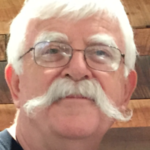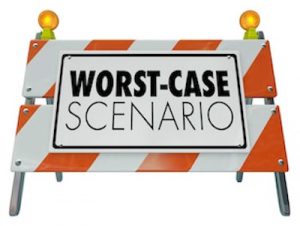
It took five years to get here, but it was well worth the effort.
 In June 2015, I traveled to Vancouver, Canada to meet with the leaders of over 60 global dermatology patient organizations. We were there to discuss the creation of an international alliance. As a group we all lamented the same problem. On one hand, patients with dermatology conditions, including PRP, face almost insurmountable challenges to body, mind and spirit. On the other hand, healthcare decision-makers incorrectly perceive the relative impact of skin conditions to be considerably lower than most other diseases.
In June 2015, I traveled to Vancouver, Canada to meet with the leaders of over 60 global dermatology patient organizations. We were there to discuss the creation of an international alliance. As a group we all lamented the same problem. On one hand, patients with dermatology conditions, including PRP, face almost insurmountable challenges to body, mind and spirit. On the other hand, healthcare decision-makers incorrectly perceive the relative impact of skin conditions to be considerably lower than most other diseases.
Said another way: They don’t think we suffer enough.
Dermatology patients, like us, have always had a firm grip on the short end of an already short stick. By week’s end, however, we 60-plus had set in motion the creation of the International Alliance of Dermatology Patient Organizations (IADPO) and started a journey that brings us GRIDD. It has also been my good fortune to serve as a Founding Board Member of IADPO (GlobalSkin) for four years. Bottomline: When it comes to PRP research, GRIDD is the real deal.
Why GRIDD and PRP?
The Global Research on the Impact of Dermatological Diseases (GRIDD) project provides a unique opportunity to integrate dermatology impact data derived directly from patients who suffer from a large spectrum of diseases (including PRP), GRIDD will be the first comprehensive patient impact project in the history of dermatology. The PRP community is part of this effort.
DALY Currently, global rankings of diseases, such as the Disability Adjusted Life Years (DALY), place dermatological disorders relatively low thereby inferring that conditions like PRP do not have a significant impact on our quality of life.This is simply not accurate or fair for the PRP global community.
DLQI The data produced by GRIDD will play a vitally important role in addressing this low disease ranking as well as the widely acknowledged weaknesses of the Dermatology Life Quality Index (DLQI). It’s all connected.
GBD GRIDD is also a response to the World Health Organization’s Global Burden of Disease (GBD) initiatives which have also underestimated the toll of living with a dermatology condition like PRP. Data from the GBD projects are used to identify patient needs, develop policies, and determine resource-allocation and research priorities on a global scale. We need to be better positioned.
The global PRP community needs all the help we can get. GRIDD will be used to help advocate for needed change and will offer the world new perspectives on the lives of millions of people who suffer from dermatological diseases like PRP.
Objectives of GRIDD
The GRIDD project has the following key objectives.
❏ Engage PRP patients worldwide in order to collect information about the burden of PRP. This is where we are today.
❏ Generate PRP-specific data on the impact of dermatological diseases
❏ Raise the “burden ranking” of dermatology diseases — including PRP
❏ Lobby for better PRP treatments and enhance the support needed for the PRP global community,
GRIDD: Q&A
 Why have I been invited?
Why have I been invited?
❏ You have been diagnosed with PRP.
❏ You are 18 years or older. A separate survey for PRP patient who are less than 18 years will be developed by the PRP Alliance in cooperation with the PRP Facebook Support Group.
What will taking part in GRIDD involve?
❏ You are asked to complete two online surveys, one in January and one in Febriuary.
❏ Each survey will take approximately 15 minutes.
❏ The second survey will feature issues raised by responses to the first survey.
What are the possible benefits of my participation?
❏ The research findings will help raise awareness among decision-makers, clinicians and researchers. This will, over time, improve the experience of patients and help us to understand how to improve care and treatment of people living with a dermatologivcal condition like PRP.
How will my information be be kept confidential?
❏ All electronic data will be kept on a password-protected server in accordance with the European Data Protection Act and will only be accessible to the research team and regulatory authorities.
Who is organizing and funding the GRIDD project?
❏ GRIDD is a project initiated and funded by the International Alliance of Dermatologist Patient Organizations (IADPO). It is being co-led by researchers from Cardiff University (Professor Chris Bundy) and Hamburg University (Professor Dr. Matthias Augustin)
What happens next
❏ As a participant, you must read and accept the terms of the Content to Participate Form. This is “standard stuff”,
❏ As a participant you must provide an email address so you will (a) receive a Participant Code via email and (b) get a link to set your password. You will be able to log out and back in.

The Worst-Case Scenario Perspective
The best part of the GRIDD experience for me as a participant was the fact that I didn’t have to remember specific dates, medications or come up with details that required research. Everything I needed to know was already in my head. It’s a simple process.
(1) Read a statement, e.g., I struggle to fall asleep.
.
(2) Next, think about YOUR worst-case scenario. In my case it was VERY MUCH until I discovered a “sleep cocktail” that worked: hydroxyzine, Ambien and drink no water after 9:00 PM.
.
(3) Select one of the five options that reflects your worst-case scenario.
❏ Not at all or not applicable
❏ Somewhat
❏ Moderately
❏ Quite
❏ Very much
Your participation in the GRIDD survey is critically important to the PRP global community. GRIDD is an opportunity for YOU to document the impact pityriasis rubra pilaris on your own life.
1. Physical impacts, e.g., pain, itch, mobility, vision, sleep, etc.
2. Daily life impacts , e.g., daily routine, leisure, work and school
3. Psychological impacts, e.g., stress, depression, control, coping, etc.
4. Social impacts, e.g., isolation, relationships, people who stare, etc.
5. Financial impacts, e.g., lost wages, affordability of treatments, etc.
6. Medical impacts, e.g., limited access to dermatological services and treatments
If WE don’t share our PRP insights, how will the rest of the world learn about us?